This is a game where you choose from three hero classes – a warrior, a rogue, and a mage – and move beneath a desecrated church in an overhead, isometric view. Core gameplay consists of slaying demons in randomly generated dungeons, collecting loot, and working your way towards a demonic final boss, who is invading from Hell. Sound familiar?
Book of Demons draws a lot of its inspiration from classic ARPG Diablo but manages to have a unique presentation and poke enough fun at itself to carve its own spot into a crowded genre.
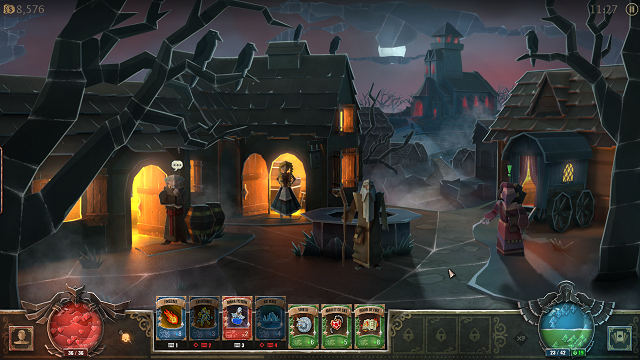
Stay Awhile and Listen
The first thing you’ll notice when you load up Book of Demons is the unique presentation and art style. The game is presented as a storybook, telling the tale of the adventurers who are clashing with a monstrous foe and its demonic army. The game embraces this presentation – everything looks like a paper cutout, hopping along through the dungeon and falling apart into piles of paper bones.
These little flourishes are what set Book of Demons apart from its ilk: the first time I used a Town Portal scroll, I watched the concentric circles fold open like a popup book and fold closed behind me. There are tons of fun little details that breathe life into the regularly drab and predictable “dungeon cave” backgrounds that the genre is known for.
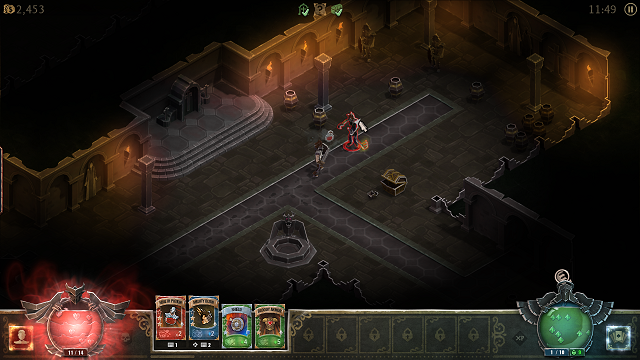
Ante Up
Book of Demons’ other main selling point is its unique take on combat and inventory. Rather than collecting items like armor and weapons, all of your character’s abilities, spells, and items are represented by cards. As you progress in the game, you can upgrade your cards and open up more slots, granting new item synergies and increasing your toolkit to battle ever-strengthening enemies.
Each character can collect up to forty different cards, which can be upgraded three times each and also have randomized magical and legendary versions. Being able to identify combos in your available cards and adapt to new enemy types quickly is key to reaching the deeper levels of each run.
There are three types of cards available, and each work in different ways: item cards, like healing potions, have a certain number of charges that can either be replenished in town (for a price) or found in dungeons from defeating monsters. Spells consume mana, which can also be replenished in town or through various other methods when exploring.
Finally, equipment adds passive abilities to your character by “blocking off” chunks of your available mana. Finding the right combination of cards is a fun puzzle, which is compounded on the hardest difficulty, which randomizes the drop order of cards that your character receives.
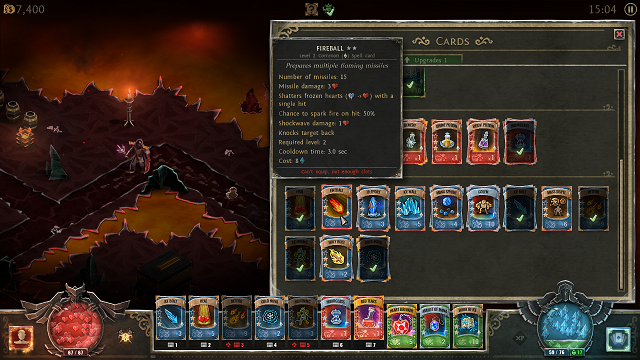
Dungeon Hopping
To say Book of Demons draws inspiration from Diablo is to do it a disservice: Book of Demons revels in nostalgia for the classic Blizzard title. The old man in town who identifies items tells you to, “Stay and listen for a while.” Upon finishing the first stage of a run, your character will comment that “The sanctity of this place has definitely been fouled.” Even the three classes mirror Diablo’s character options, with abilities that should be familiar to savvy veterans.
Book of Demons treads a thin line between imitation and self-aware parody. Some of the jokes are pretty solid – the first time you see the Archdemon (the game’s final boss, a version of the Devil), he is sitting in waist-deep fire, squeezing a rubber ducky that is wearing a spiked collar. There are plenty of little winks back at the player, but their infrequency is a bit jarring considering that, outside of the graphics style, Book of Demons plays it pretty straight.
Luckily, it nails the sense of progression that a game like this needs. Like many procedurally generated titles, Book of Demons will teach you lessons in brutal ways. You’ll have to learn quickly what new foes are capable of – your health bar can melt away pretty quickly if you are surrounded and affected by status ailments. Especially on the highest difficulty, this can erase plenty of progress but, hopefully, will help you find success in future runs.

One More Level
One of the best additions Book of Demons adds to the genre is the “Flexiscope,” which allows you to customize the length of each dive back into the dungeon. The game puts together an estimate of how quickly you play through levels and will begin to estimate how long a “short,” “medium,” or “long” dungeon run will take you. This makes it pretty easy to customize your adventure and get a good idea of how much time that “last run before bed” will take you.
Granted, progress is saved every time you exit and enter a floor, so these time estimations are a bit superfluous. But it is nice to have an idea of how long a trip through the next few floors will take you – right up until that trip is cut short because you are killed halfway through without enough gold to purchase a resurrection.
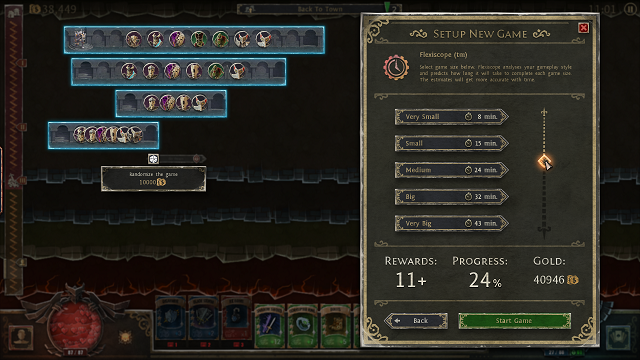
Pros:
- Unique graphical style offers plenty of charm and surprises
- Difficulty and length customization has something for everyone
- Good nostalgia elements
Cons:
- A bit too similar to its inspirations
- Self-aware humor doesn’t always land
Book of Demons is a pretty fun time: it does bring back plenty of fond, sleepless nights combing the dungeons beneath Tristram. Its unique aesthetic adds a lot to the game as well. It can be a bit derivative, and if the roguelike formula of dying and starting over does not appeal to you, you may want to sit this one out.
Clearing out bosses, collecting gold, and upgrading your character are timeless fun, however, and Book of Demons has that progression down pat.
[Note: The developer provided a copy of Book of Demons for the purpose of this review]

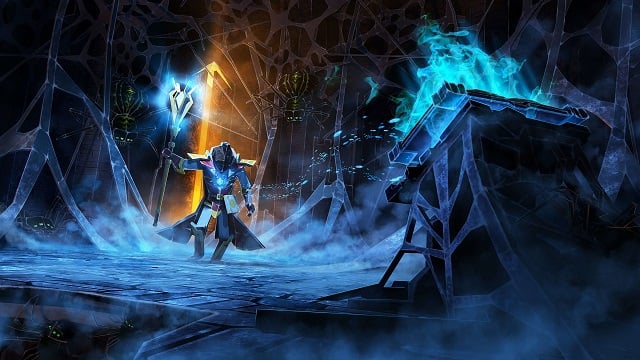





Published: Dec 12, 2018 05:35 pm